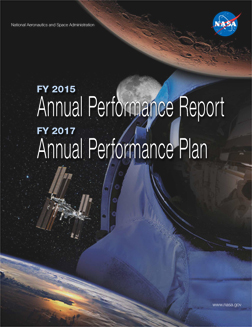- Home
- Agencies
- Department of Agriculture
- Department of Housing and Urban Development
- General Services Administration
- Department of Commerce
- Department of the Interior
- National Aeronautics and Space Administration
- Department of Defense
- Department of Justice
- National Science Foundation
- Department of Education
- Department of Labor
- Office of Personnel Management
- Department of Energy
- Department of State
- Small Business Administration
- Environmental Protection Agency
- Department of Transportation
- Social Security Administration
- Department of Health and Human Services
- Department of the Treasury
- U.S. Agency for International Development
- Department of Homeland Security
- Department of Veterans Affairs
- Goals
- Initiatives
- Programs
Primary tabs
Strategic Objective
Search for life and understand the universe.
Strategic Objective
Overview
NASA leads the Nation and the world on a continuing journey to answer profound questions: How does the universe work? How did we get here? Are we alone? The scope of astrophysics is truly breathtaking, ranging from the birth of the universe and the development of stars and galaxies over cosmic time, to the search for life on planets around other stars.
NASA’s astrophysics missions explore the extreme physical conditions of the universe and study the building blocks of our own existence at the most basic level: the space, time, matter, and energy that created the universe. Our telescopes have already measured the current age of the universe to be about 13.7 billion years and have uncovered remarkable new phenomena, such as the mysterious dark energy that dominates the universe. In the future, they will probe the origin and destiny of the universe, including the first moments of the Big Bang and the nature of black holes, dark energy, dark matter, and gravity.
We seek to understand the origin and evolution of the universe, as well as understand the processes for life on other planets. NASA’s observatories allow astronomers to explore the processes of formation of stars, galaxies, and planets. We have observed star formation occurring when the universe was at only a few percent its current age. The upcoming James Webb Space Telescope (JWST) will allow us to uncover the mysteries of star formation at an even earlier age, as well as study in detail planets around other stars.
We are navigating a voyage of unprecedented scope and ambition: seeking to discover and study planets orbiting around other stars and to explore whether they could harbor life. NASA’s astrophysics missions, in conjunction with ground-based telescopes, have already confirmed the existence of over 2,000 extrasolar planets. Of even greater interest, we are now finding that there are many small, rocky extrasolar planets where liquid water could exist. In the future, NASA’s telescopes will continue this breathtaking journey, discovering new planets and observing signatures that could indicate possibilities for life.
Read Less...Progress Update
Through the Strategic Review and the Agency’s other performance management processes, NASA reviews recent accomplishments and near term plans for the Agency’s strategic objectives and programs. NASA’s Strategic Objective 1.6 is pursued by the Science Mission Directorate (SMD) Astrophysics Division, which seeks to understand how does the universe work, how did we get here, and are we alone. The Astrophysics Division is demonstrating satisfactory overall cost and schedule performance for missions in development, and a number of significant scientific discoveries were announced in the last year. The Astrophysics Division’s critical next steps include continuing the development of the next Astrophysics missions, including the James Webb Space Telescope and the Transiting Exoplanet Survey Satellite (TESS). Specific performance measures for the next two years can be found in NASA’s FY 2016 and FY 2017 Annual Performance Plans.
The Strategic Review also addresses long-term strategic outcomes, alignment, and key management challenges for each strategic objective, as well as across NASA’s portfolio of activities. In 10 years, NASA plans that the Agency’s current efforts under Strategic Objective 1.6 will lead to further understanding of the universe and how it works, its history, as well as the continued search for life beyond the solar system. Many of the key challenges for the Astrophysics Division are common across all of the SMD divisions (access to space; technology development; project technical, cost, and schedule challenges; partnerships; and mission support services and infrastructure) and are articulated in the 2014 Science Plan. Additionally, the James Webb Space Telescope (Webb) is on track, but challenges will remain until launch for Webb to maintain cost and schedule. Launching Webb in 2018 is one of NASA’s Agency Priority Goals.
For more information, please see http://science.nasa.gov/astrophysics/. Highlighted achievements during FY 2015 are detailed in the FY 2015 Agency Financial Report. Additional details on the FY 2015 performance for supporting Performance Goals and Annual Performance Indicators are provided in NASA’s FY 2015 Annual Performance Report. Information on the strategies for achieving this strategic objective can be found in the 2014 NASA Strategic Plan. Additional information on strategies, challenges, implementation, and program-specific detail is available in the NASA 2014 Science Plan, as well as the 2013 Astrophysics Roadmap.









